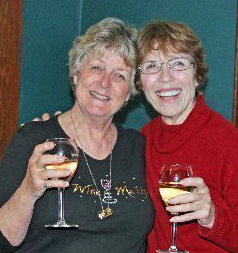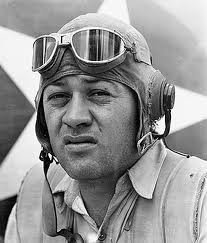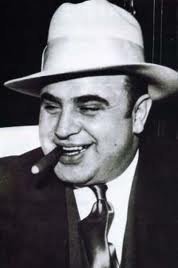
This species and the other "American rosefinches" were formerly included with the rosefinches of Eurasia in the genus Carpodacus; however, the three North American species are not closely related to the rose finches of the Old World, and have thus been moved to the genus Haemorhous by most taxonomic authorities.
It is included in the finch family, Fringillidae, which is made up of passerine birds found in the northern hemisphere, Africa, and South America. The purple finch was originally described by Johann Friedrich Gmelin in 1789.
Adults have a short forked brown tail and brown wings. Adult males are raspberry red on the head, breast, back and rump; their back is streaked.
Adult females have light brown upper parts and white under parts with dark brown streaks throughout; they have a white line on the face above the eye.
Bird measurements:
- Length: 4.7-6.3 in
- Weight: 0.6-1.1 oz
- Wingspan: 8.7-10.2 in
Their breeding habitat is coniferous and mixed forest in Canada and the northeastern United States, as well as various wooded areas along the U.S. Pacific coast. They nest on a horizontal branch or in a fork of a tree.
Birds from northern Canada migrate to the southern United States; other birds are permanent residents.
The purple finch population has declined sharply in the East due to the house finch.
Most of the time, when these two species collide, the house finch out competes the purple finch. This bird has also been displaced from some habitat by the introduced house sparrow.
These birds forage in trees and bushes, sometimes in ground vegetation. They mainly eat seeds, berries, and insects. They are fond of sunflower seeds, millet, and thistle.
The Purple Finch prefers nesting in lowland coniferous and mixed forests, avoiding more heavily populated urban areas, but sometimes found in rural residential areas. The female Purple Finch usually builds her nest on horizontal branches of coniferous trees, away from the trunk, but occasionally in tree forks.
The nest is shaped like an open cup, made up of rootlets, twigs, and weeds, and lined with grass, hair, and moss.
Holy cow, these cinnamon buns are amazing! The combination of the flaky dough and the gooey topping makes this Cinnamon Bun Pie a recipe you'll want to keep near the top of your recipe collection.
- 3/4 cup plus 2 tablespoons butter, melted, divided
- 1 cup chopped pecans
- 1/2 cup sugar
- 1 tablespoon ground cinnamon
- 1 (16.3-ounce) package refrigerated biscuits (8 biscuits)
- Preheat oven to 375º. Coat bottom of a deep-dish pie plate with 2 tablespoons melted butter; set aside. Place remaining melted butter in a small bowl.
- In another small bowl, combine pecans, sugar, and cinnamon; mix well. Sprinkle one-quarter of the pecan mixture over bottom of pie plate.
- Separate each biscuit into 3 layers. Dip biscuit pieces one at a time in melted butter, making sure to coat each thoroughly. Layer 8 biscuit pieces in bottom of pie plate, completely covering pecan mixture. Repeat pecan mixture and biscuit layers 2 more times. Top with remaining pecan mixture and drizzle with any leftover melted butter.
- Bake 20 to 25 minutes, or until biscuits are golden and cooked through. Allow to cool 5 minutes, then invert onto a serving platter and slice into wedges. Serve warm.
***Keep biscuits refrigerated until ready to pull apart.
1918 – Albert Francis Capone, American crime boss son (d. 1947)
1934 – Wink Martindale, American game show host
1937 – Max Baer, Jr., American actor
1944 – Dennis Wilson, American musician (d. 1983)
The origin of the cookie appears to begin in Persia in the 7th century, soon after the use of sugar became common in the region. They then spread to Europe through the Muslim conquest of Spain. Cookies were common at all levels of society throughout Europe by the 14th century, from the royal cuisine to the street vendors.
Cookies arrived in America in the 17th century. Macaroons and gingerbread cookies were among the popular early American cookies.
In most English-speaking countries outside of North America, the most common word for cookie is “biscuit.” In some regions, both terms, cookies, and biscuits are used.
Cookies are classified into different categories, with the most common ones being:
Bar cookies – Drop cookies – Filled cookies
Molded cookies – No bake cookies
Pressed cookies – Refrigerator cookies
Rolled cookies – Sandwich cookies
HOW TO OBSERVE
Pick up some cookies at your local bakery. Remember to share some of your cookies with your family and friends! A great way to get started is by making a list of your favorite cookies to bake and enjoy. Then organize your baking tools and start your assembly line.
First Place Coconut Macaroons
Gingerbread Cookies
NATIONAL COOKIE DAY HISTORY
In 1976, Sesame Street included National Cookie Day on its calendar for the first time on November 26th. The Cookie Monster also proclaimed his own National Cookie Day in the 1980 book The Sesame Street Dictionary.
Then in 1987, Matt Nader of the Blue Chip Cookie Company out of San Francisco created Cookie Day, celebrating it on December 4th.



















No comments:
Post a Comment